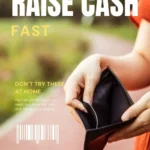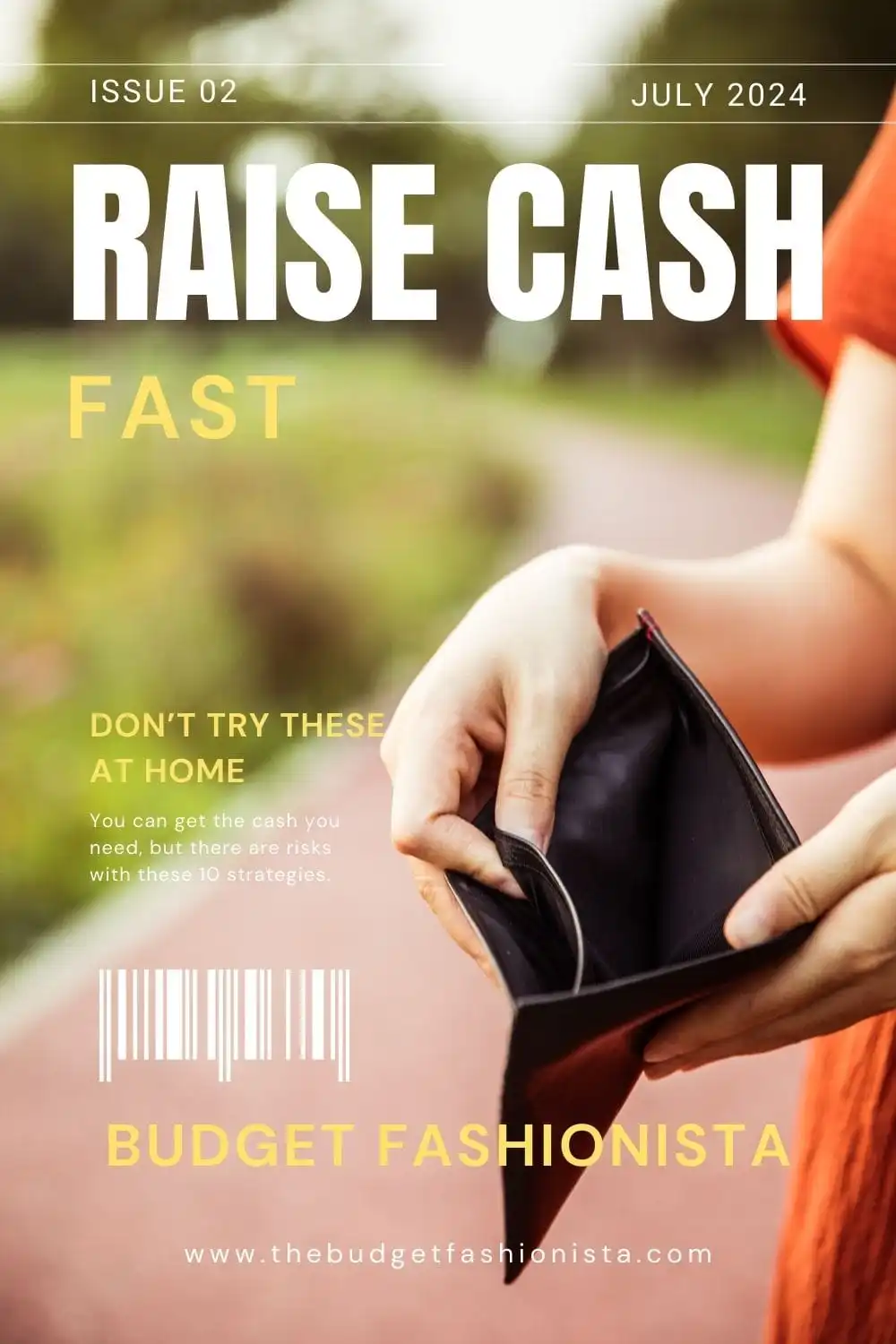
The conventional money advice is to avoid buying things you can’t afford. But if we’re being honest, do we follow that wisdom? No, we do not. Mostly, we buy the expensive item we want with a credit card and hope for the best when the bill arrives.
Hoping for the best is what gets you in trouble financially — this habit is far more toxic than taking on debt. Debt, done right, is manageable. Winging it with your money to collect fancy things is not.
Fortunately, there is a middle ground between reckless spending and a frugal lifestyle. To enjoy that middle ground, you must first choose carefully when to splurge. And then, proceed with full knowledge and acceptance of the consequences.


I can’t help you choose when to over-spend, but I can help you understand the potential outcomes for doing so. To that end, let’s explore 10 ways to fund purchases you can’t afford, ordered from least to most risky. For each, I’ll share the risks plus strategies to control any long-term damage to your financial health.
Know that these methods are not sustainable and must be used sparingly. Using them repeatedly creates the potential for financial disaster. With that caveat, let’s dive in.
Cash in your points
- Summary: Request cash or gift card distributions from your loyalty programs.
- Big risk: You may not have enough points to fund the item you want.
- Risk mitigation: Start building points and let them accumulate like a splurge emergency fund.
Redeeming point balances for cash or gift cards should be your first funding option for a splurge — assuming you have points to redeem.
If you have no clue what I’m talking about, here’s the rundown. There are many apps that reward you for playing games, shopping online, taking surveys, and more. You can maximize your earnings power on these apps by sharing personal shopping, browsing, location, and health data.
Four income-generating apps I’ve used to raise cash are:
- Fetch: Earn points for uploading receipts and playing games. This one is my favorite because the app is intuitive and the customer service team is responsive. My point balance in Fetch is currently 7,742. I have previously cashed in points for $73 worth of gift cards.
- Benjamin: Earn points for uploading receipts, connecting accounts, and taking surveys. My lifetime earnings in Benjamin is about $69 after four months.
- Pogo: Pogo is like Fetch. You can use the same receipts for both apps. I have about 4,000 points in Pogo, which equals $4.
- Caden: Earn points for turning on location tracking and connecting accounts. I have earned $32 in Caden in three months.
All four apps require you to authorize sharing personal data. If you start playing games to earn more points, you may also have to endure obnoxious in-game ads. Outside of those drawbacks, these apps generally work as promised. You’re not going to make a living on them, but they can deliver some spending money.
If excessive data share sounds creepy, you can opt for more traditional cash-back shopping apps like Rakuten. Rakuten and others pay you rebates for shopping through their referral links.
Sell some stuff
- Summary: Find stuff around your house you don’t need and sell it on Facebook Marketplace.
- Big risk: You may encounter scammers.
- Risk mitigation: Only accept cash in face-to-face transactions. Require payment before shipping goods. Use PayPal for payments to avoid sharing your account numbers.
You probably have unneeded stuff lying around your home. Shoes, clothes, tools, hobby equipment, and even furniture are all fair game for resale.
The thing is, selling stuff online can be tedious. If you’re new to resale, consider starting with one or two items so you can establish a process. Steps may involve:
- Research pricing of similar used items for sale. Or, start with 50% of the item’s new retail price if the item is in good condition.
- Take photos.
- Write the product description.
- Estimate shipping costs.
- Decide where to list. Options include Facebook Marketplace, eBay, Bonanza, Craigslist, Nextdoor, Offerup, and Mercari.
Depending on the platform you choose, you may also need to create a payment account. Prospective customers usually prefer to use PayPal or Venmo Business payments. These offer purchase protections, while PayPal Friends and Family payments and Venmo personal payments do not.
Buy now pay later (BNPL)
- Summary: Use a service like Klarna or Afterpay to split your purchase amount into payments, often with no interest.
- Big risk: You may incur fees and interest if you miss a payment.
- Risk mitigation: Only carry one BNPL at a time.
BNPL services provide short-term installment loans for retail purchases. Some retailers pay BNPL fees on your behalf and some do not. When the retailer funds the fees, the loan is interest-free to you.
Commonly, these loans require repayments every two weeks by credit card. A $200 purchase might require four biweekly payments of $50, for example. Miss a payment and you likely will be charged a fee.
The good news is that BNPL providers typically do a soft credit check for approvals, which means having the loan shouldn’t affect your credit score. The bad news is that missed payments will be reported, and that will lower your credit rating.
You may see BNPL offers while checking out on ecommerce websites like Walmart and Amazon. You can also access BNPL loan offers directly from providers, such as PayPal, Affirm, Klarna, and Sezzle.
Call it an emergency
- Summary: Take the money you need from your emergency cash savings account.
- Big risk: You may not have the cash you need when a true emergency arises.
- Risk mitigation: Replace the funds before you reach in for another splurge.
If you have a cash emergency fund, you can reach into that cookie jar for the pricey item you want. If you don’t have an emergency fund, it’s time to get one.
Experts recommend having enough cash on hand to fund three months of living expenses. To amass that sum, you must save 5% of your income to a cash savings account for five years. In reality, you will probably keep saving indefinitely, because you’ll spend some here and there.
Use a credit card
- Summary: Charge the item you can’t afford and pay it off over time.
- Big risk: Using debt to buy things can easily become a habit that slowly deteriorates your financial health.
- Risk mitigation: Calculate a repayment plan and refrain from additional splurges until the first one is paid off.
According to WalletHub, the average rate on existing credit card accounts is 22.75%. At that rate and with a monthly payoff budget of $30, a $500 purchase takes one year and nine months to repay. Under these terms, you’ll spend $106.68 in interest.
Stack more purchases on top of the $500 and you face a longer timeline and higher costs. That’s why it’s important to use credit card debt sparingly. This is easier if you estimate your payoff plan before you buy with a credit card payoff calculator like this one. When you review the numbers, you might change your mind on the splurge. Sometimes the designer handbag just isn’t worth the hassle.
If the purchase you want is expensive, you could charge it and then transfer the balance immediately to a 0% rate offer. You’ll probably pay 5% interest upfront, but that’s cheaper than 22% annually if repayment extends beyond three months.
Pro tip: Divide the balance including the upfront charge by the number of months the rate remains at 0%. This is your minimum repayment to ensure no further interest charges.
Pay bills late
- Summary: Delay paying a big bill until your next paycheck arrives. Use the money on hand now to buy the thing you want.
- Big risk: This strategy can snowball, forcing you to be late on future payments, too.
- Risk mitigation: Review the timing of upcoming paychecks to ensure you can pay your bills in this month and the next one.
Say your mortgage payment is due on the first of the month, but you don’t get charged a late fee until the 15th. Let’s also assume you get paid every two weeks and your next two paydays fall on the 26th and the 10th. In that scenario, you should be paying your mortgage from the earlier paycheck on the 26th. You could alternatively delay your mortgage payment until the next paycheck drops on the 10th, which leaves the cash from the first check untouched.
Do not do this unless you’ve checked the timing of your next four paychecks to ensure you can pay your bills on time. You must also have a catch-up plan in place, because you can’t operate your budget behind your income indefinitely.
Note that if you get paid every other week, there are two months in every year you receive three paychecks. This strategy works best around that time.
Pause retirement contributions
- Summary: Skip of month of retirement contributions to free up some cash.
- Big risk: You may undermine your ability to retire comfortably in the future.
- Risk mitigation: Decide when you’ll reinstate contributions and raise your contribution rate going forward.
The conventional wisdom is to save 15% of your income to your retirement account. While you might have opted for a lower contribution rate, you are hopefully contributing at least a few hundred bucks monthly to a 401(k). Pausing those contributions temporarily creates excess cash by increasing the size of your paycheck.
I cringe at myself for sharing this strategy, because you shouldn’t be borrowing from your retirement to buy random stuff. It takes decades to save enough for a comfortable retirement — and even a short pause can make the goal unachievable. This is especially true if you’re contributing at a single-digit rate.
If you go this route, commit to two things. The first is the date you will reinstate contributions. This must be non-negotiable. Your second commitment is that you will raise your contribution rate the next time your pay increases.
Borrow from your life insurance
- Summary: Call up your permanent life insurance provider and ask for a loan. Insurance carriers can often send a check in days.
- Big risk: Your policy goes insolvent due to compounding interest charges. There may be tax implications if the policy lapses while you have a loan outstanding.
- Risk mitigation: Set up automatic payments to repay the loan.
If you have cash-value life insurance, you can probably take out a loan against it. Many insurance companies are quick to offer these loans as the interest is another source of income. Often, the interest rate on the loan will be fixed and relatively low.
Your insurer may not enforce any repayments at all, which is great until you see your loan balance rising from accumulated interest. That becomes problematic if you die or decide you don’t want the insurance anymore. If you die, the insurer collects the loan balance from your death benefit — so your beneficiaries essentially pay for your spending. If you let your policy lapse, the loan may become taxable.
So, borrow from your life insurance only if you intend to repay it. If you don’t want to repay the loan, consider whether it makes sense to surrender the policy instead.
Slash your car insurance temporarily
- Summary: Reduce your car insurance coverage to the state-mandated minimum temporarily. The money you save on premiums can fund your purchase.
- Big risk: You risk being wiped out financially if you cause a bad accident while you have minimum coverage.
- Risk mitigation: Don’t drive your car while you’re carrying lesser insurance.
If your car is paid for, you could trim your car insurance temporarily to save a few hundred bucks on premiums. You’d then use the savings to buy the item you want.
The risk is that you cause an accident while you’re driving with minimum coverage. You’d be left with no funds to fix your own car, and potentially insufficient insurance to pay for the damage you caused.
This is not a realistic strategy for anyone who drives a lot. But if you get around town on the train or a bicycle, and your car mostly stays in the garage, you could make this work.
Bet on volatility
- Summary: Make short-term investments in volatile assets like crypto with the intention of selling as soon as your position is up. Repeat until you’ve raised enough funds.
- Big risk: Whatever asset you buy could easily lose value and never regain it, leaving you worse off financially than you were before.
- Risk mitigation: Only use cash windfalls for this strategy in case you lose it all.
You can make money betting on volatility, but this takes a combination of luck, bravery, and skill. The basic process is: Select a volatile asset, learn everything you can about it, then buy low and sell high. This is known as swing trading or day trading, depending on how fast you turn over the assets.
Know that your chances of success are low, especially if you have limited investing experience. Keep your risk manageable by only investing money you can afford to lose. Consider using part of the extra paycheck you get every six months or the birthday money your grandma sends you. Don’t use funds that are supposed to pay your mortgage. You’ll regret it.
Cash when you need it
The secret to having the things you want in life is knowing when to scrimp and when to splurge, when to be conservative and when to take risks. Most of the strategies above require you to manage your money carefully first, so you can splurge later. For example, you can’t pause retirement contributions if you aren’t making any.
So that’s the big takeaway. Be frugal and save your money so you can access cash when you feel like living a little.
One last thing. In case you were wondering, I have employed all the above strategies except two. Care to guess two which I haven’t done?
PSA. It’s time to dump Google and switch to Ecosia. Get answers faster and make the world a better place. Download the Ecosia iOS app and make Ecosia.org your browser’s homepage.



